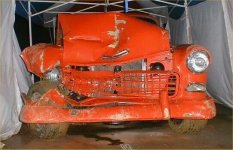mikehaugen
Elite Member
Well I'll say this... I agree that it has been established that you cannot make a book passable weld on 3/8" with a 120v mig. I will also say that even if it didn't work out, we all should have learned an awful lot along the way about joint prep, parameters, and a couple other tricks to get the most out of these welders to make the best possible weld we can. The tests may have been failures, but the threads have certainly not been. I will walk away from this with a lot more knowledge than before, so it was not a waste of my time to follow this. I have a 220 stick, but I still learned a lot and will be able to apply it if/when I buy a 120 mig.
Sodo, I for one appreciate your persistence through all of this to draw as much knowledge as possible from these pros. And yes, I think many of the welds made would be acceptable for many practical purposes, especially if something is overbuilt to begin with. I think the times are rare when some piece of equipment is relying on every weld to be absolutely 100%.
Finally, thank you very much to all of the guys who stepped in and gave it an honest attempt. Your sharing of knowledge was very useful, even if it seemed like failure.
Sodo, I for one appreciate your persistence through all of this to draw as much knowledge as possible from these pros. And yes, I think many of the welds made would be acceptable for many practical purposes, especially if something is overbuilt to begin with. I think the times are rare when some piece of equipment is relying on every weld to be absolutely 100%.
Finally, thank you very much to all of the guys who stepped in and gave it an honest attempt. Your sharing of knowledge was very useful, even if it seemed like failure.

